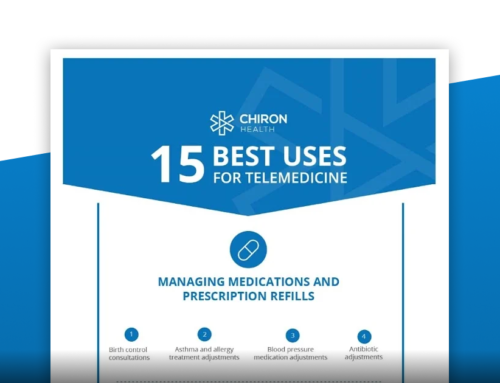Implementing a telemedicine program is a great way to increase practice revenue and delight your patients at the same time. Virtual visits are a huge convenience for patients and an opportunity to introduce a new level of flexibility into the practice. The technology exists to make incorporating remote care seamless. We talk to providers every day that have started a telemedicine program in short order. Here’s the roadmap to success that they’ve shared with us.
Step 1| Develop a Strategy and Clear Goals
The first order of business is to define what success looks like for your practice. What are you hoping to achieve with telemedicine and how will you know if you’ve reached your goals? We like to apply the SMART goal principle and look for goals that are specific, measurable, achievable, relevant, and time-bound. Your objectives might include increased revenue, shorter in-office wait times, fewer no-shows, or improved patient satisfaction.
Step 2| Get the Right People Involved
Your telemedicine program will need to be integrated with many functional areas within the practice, so it is smart to involve key staff members from the beginning. Most teams include all of the providers who will use the technology, administrative staff that will schedule appointments, insurance coordinators, and technical resources if you have access to them. Many providers appoint a member of the team to serve as the project lead for rolling out virtual visits.
Step 3| Get Familiar with Your State Rules and Regulations
Most states recognize the incredible power of telemedicine to increase access to care and reduce costs. That’s why more than 30 of them now have some sort of rule requiring that private payers reimburse for telemedicine. Most states also allow providers to establish a patient relationship via video and all states cover telemedicine for patients with Medicaid right now as a result of COVID-19 legislation. Unfortunately, the landscape is not consistent across states, so you’ll need to learn about the rules where you are.
Step 4| Evaluate Your Technology Options
There are several different kinds of telemedicine technology including remote patient monitoring, store and forward, and real-time audio and video. The latter is the most popular and most commonly reimbursed method. As you evaluate providers look for one with a solution that will be easy for both patients and staff to use. HIPAA compliance with data encryption is essential, and you’ll want something that integrates with your EHR.
Step 5| Draft a Utilization Plan
The “If you build it, they will come,” plan doesn’t work very well for new telemedicine services. Therefore, you need a plan for how you will let your patients know that virtual visits are available and your staff will need to be trained to promote it. Some offices block out times of the week for virtual visits or offer remote appointments outside of traditional business hours.
Step 6| Implement Your Telemedicine Software
Most modern telemedicine solutions are cloud-based and require very little in the way of implementation. There will be some set up required to integrate with your EHR and some other configurations, but your software provider should be happy to help. You will want to plan some time for training, but if you’ve selected a user-friendly technology solution training shouldn’t be complicated or extensive.
Step 7| Create a Feedback Loop
Your program probably won’t be perfect right out of the gate, so plan to monitor your results and make necessary adjustments. It’s a good idea to make it as easy as possible for patients and staff to offer suggestions and feedback.
Step 8| Track Your Progress
Once you get everything up and running, be sure to look back at your goals and analyze how you are doing against the measures you set. We recommend doing this monthly at first, but it can be less frequent as you learn more about what to expect.
Check out Direct Health revenue calculator to see just how effective small changes can be to your bottom line.
In Summary
We hope this guidance is helpful as you get your program off the ground. You’ll make adjustments to fit your unique practice, of course, but these best practices will get you off to a strong start. And Direct Health is here to help you every step of the way. Schedule a demo today to speak with a telemedicine specialist who can create a program that is right for you.
About Direct Health
Direct Health is working to change how healthcare is delivered by recreating the doctor-patient relationship. With the secure messaging app, physicians and patients have the ability to connect via text, call, or video, from anywhere and on their schedule. This enables patients to chat with their doctor, vet, or therapist at any time, and clinicians to extend care and get paid without extra overhead or burdensome schedules. With over 20,000 doctors across the platform, Direct Health is leading the way in the future of healthcare. For more information, visit http://www.directhealth.us.






Leave A Comment